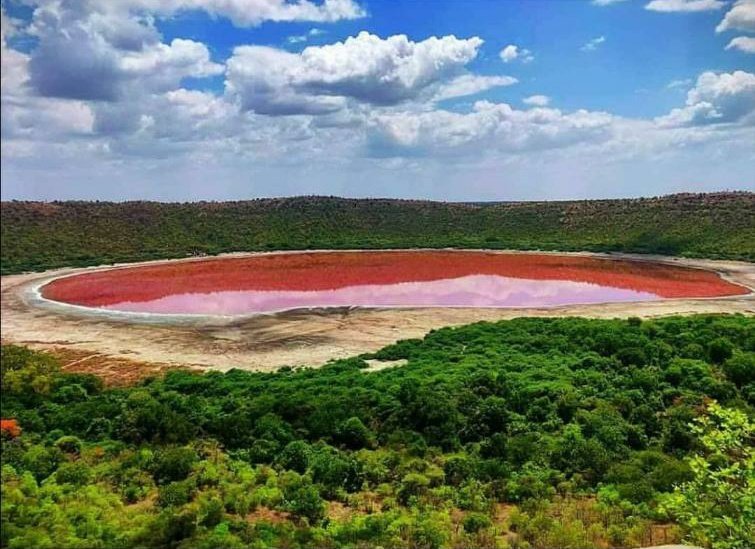The water of Lonar Crater Lake in India is typically deep-green, but it has recently turned pink — almost overnight — and nobody knows why.

I think it goes without saying that large bodies of water don’t typically just change color, but Lonar Lake did. The Indian landmark was a tourist attraction before, but it has now become a hotbed of visitors eager to see its bright pink waters.
Exactly what caused this change, or why it happened so fast, is as of yet unknown.
Crater lake
The color change was captured best by two NASA images taken on May 25 and June 10 with the Operational Land Imager (OLI) on Landsat 8. The waters changed color over the span of a few days, according to NASA.
“India’s Lonar Crater began causing confusion soon after it was identified in 1823 by a British officer named C.J.E. Alexander,” NASA says of the crater.
“Lonar Crater sits inside the Deccan Plateau—a massive plain of volcanic basalt rock leftover from eruptions some 65 million years ago. Its location in this basalt field suggested to some geologists that it was a volcanic crater. Today, however, Lonar Crater is understood to result from a meteorite impact that occurred between 35,000 and 50,000 years ago.”
Lonar Lake is located in India’s west-central state of Maharashtra, and it isn’t the only pink lake we know of. Lake Hillier in Australia is permanently pink, with the color likely produced by Halobacteriaceae, pink-colored microorganisms that inhabit its salty waters, and a species of single-cell algae called Dunaliella salina. When stressed, D. salina releases carotenoids (a class of molecules that give plants such as carrots their color), including an orange-red colored one.
But Lake Hillier doesn’t change its color — it’s always pink. One possible explanation of the shift in Lonar Lake could be a rise in salinity due to a long period of warm, dry weather promoting evaporation, as is the case with Lake Urmia in Iran (whose color changes seasonally). In other words, it could be going to a very dramatic and pink algal bloom. A chemically-induced change hasn’t been ruled out yet, however.
Lonar Lake is quite visually striking and remote, and as such is dotted with small temples along its rim. Due to its salinity and alkaline nature, the late doesn’t house much wildlife. It was the discovery of maskelynite (a type of natural glass produced during asteroid impacts) revealed its true origin.
The lake has always been unique, and this change in color only adds to its quirkiness. Exactly what caused this change is still unknown — as is whether the colors will switch back or not. But researchers will undoubtedly try to find out what’s going on here, and will keep the lake under observation while drawing samples to analyze.








